Search Images
Browse Content (p. 1608)
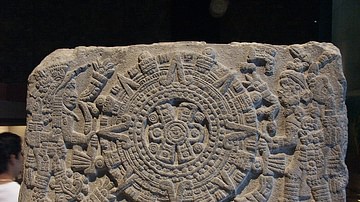
Image
Throne of Motecuhzoma, Detail
A detail from the Throne of Motecuhzoma II otherwise known as the Monument of Sacred War. The sun disk in the centre is flanked by the god Huitzilopochtli on the left and Motecuhzoma II on the right. The stone was carved c. 1507 CE. to commemorate...
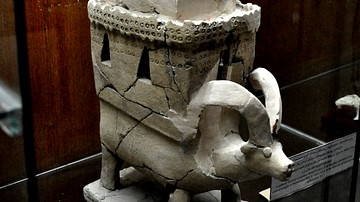
Image
Mesopotamian Incense Container
A pottery incense container found at layer 5 of the altar platform of the central temple of Basmosian Hill, Mesopotamia, Hurrian period, 2nd millennium BCE.
Sulaimaniya Museum, Iraq.

Image
Golden Earrings From King Shulgi
A pair of golden earrings with the shape of a half pumpkin. The overlying decorative cuneiform inscriptions mention that these earrings were a gift from King Shulgi. Mesopotamia, new Sumerian era, Ur III, reign of King Shulgi, 2029-1982...
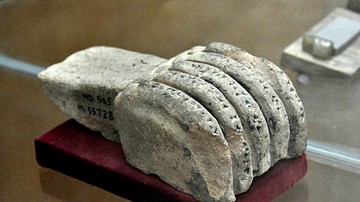
Image
The Hand of Ishtar (Inanna)
A hand of the goddess Ishtar (Inanna). This is a decorative element of architecture which was used in temples and palaces. It is inscribed with cuneiform inscriptions and was found in the palace of Ashurnasirpal II to commemorate the new...
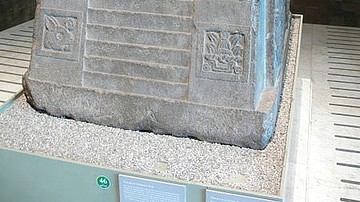
Image
Throne of Motecuhzoma II
The Aztec Monument of Sacred War (teocalli) or throne of Motecuhzoma II. Carved in c. 1507 CE to commemorate the New Fire Ceremony of that year. (National Museum of Anthropology, Mexico City)
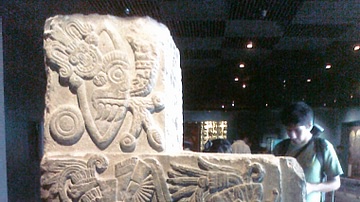
Image
Monument of Sacred War
A view of the side of the Aztec Monument of Sacred War or throne of Motecuhzoma II. Carved in c. 1507 CE to commemorate the New Fire Ceremony of that year. The sides of the throne depict the four gods Tlaloc, Xochipilli, Xiuhtecuhtli, and...
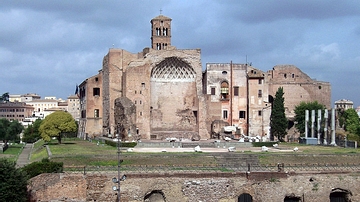
Image
Temple of Venus and Roma, Rome
The Temple of Venus and Rome (Templum Veneris et Romae) is thought to have been the largest temple in Ancient Rome. The architect was the emperor Hadrian and construction began in 121 CE. It was officially inaugurated by Hadrian in 135 CE...
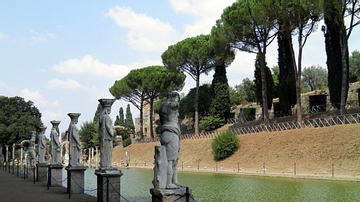
Image
The Canopus at Hadrian's Villa, Tivoli
The villa was constructed at Tibur (modern-day Tivoli) for Emperor Hadrian as a private summer retreat between 118 and 134 CE. One of the most striking and best preserved parts of the Villa are the Canopus and Serapeum. Canopus was an Egyptian...
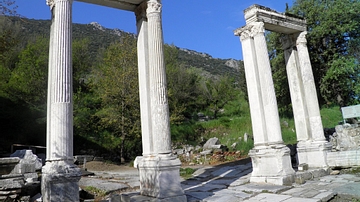
Image
Hadrian’s Gate at Ephesus
This gate, located at the end of Curetes Street in Ephesus (Turkey), was dedicated to Hadrian in honour of the Emperor's visit to the city (in 124 or 129 CE).
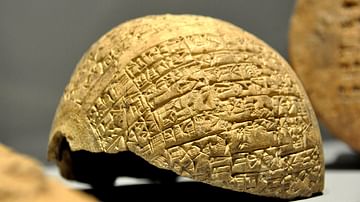
Image
Inscribed Stand Head of Entemena
The cuneiform inscription on this stand's head mentions the name of Entemena, ruler of Lagash. Early Dynastic Period, c. 2400 BCE. From Southern Mesopotamia, modern-day Iraq. (The Sulaimaniya Museum, Iraq).